Ik ben gek op het geluid van lange noten die subtiel overgaan in natuurlijke harmonics/feedback. Om zo'n geluid te maken leiden meerdere wegen naar Rome:
- Lekker naast een luide versterker zitten, maar daar zijn m'n buren niet zo blij mee.
- Tap harmonics spelen, maar dat klinkt me te abrupt.
- Een Sustainiac element, maar dat is wat kostbaar om op al m'n gitaren te monteren.
- Een E-Bow kan ik op al m'n gitaren gebruiken en werkt goed, maar het is een wat onhandig ding als je ergens tussendoor maar 1 nootje wil laten feedbacken.
Oplossing: Dit Freqout pedaal.
Het Feedback type heb ik op Natural Low staan, dat is het geluid dat ik zoek. Onset op ong, 1/3e zodat er een mooie overgang is. Gain vrij hoog want feedback is nu eenmaal niet zachtjes.
Momentary en Dry heb ik allebei op 'ON'. Daardoor blijft het oorspronkelijke geluid hoorbaar en wordt de feedback er geleidelijk mooi doorheen gemixt, maar alleen wanneer en zolang ik de knop ingedrukt houd.
De andere feedback types gebruik ik eigenlijk niet. Als je de feedback laat doorlopen terwijl je b.v. een slide doet, klinkt dat soms (niet altijd!) wat 'digitaler' dan ik mooi vind. Voor mij geen probleem omdat ik hem stop voordat ik een evt. slide doe, maar voor gebruik van harmonics en/of sustain over een hele melodielijn vervangt het voor mij de E-Bow dus niet. Desondanks heeft ie een vaste plek in m'n arsenaal gekregen omdat ie zo handig is voor het feedback effect op een losse noot hier en daar!


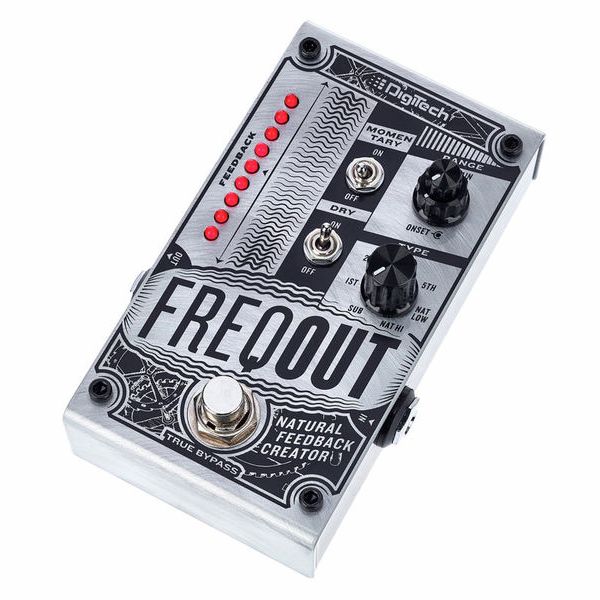
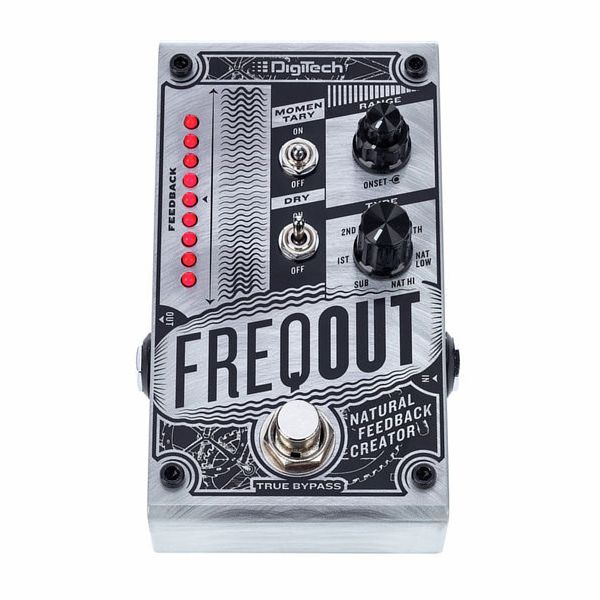
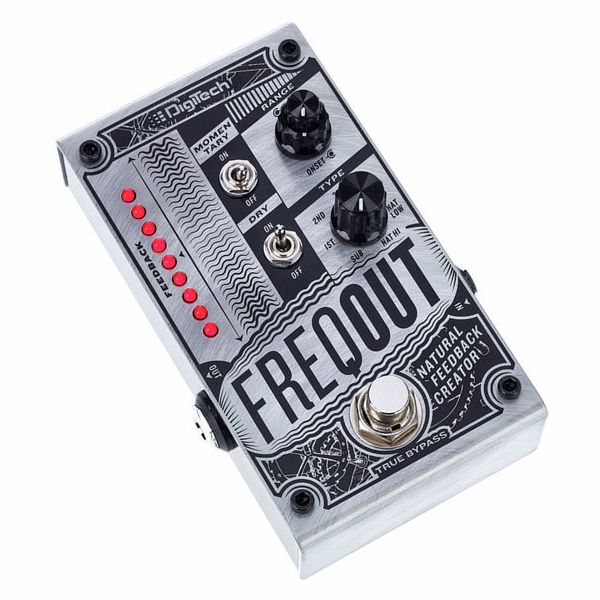
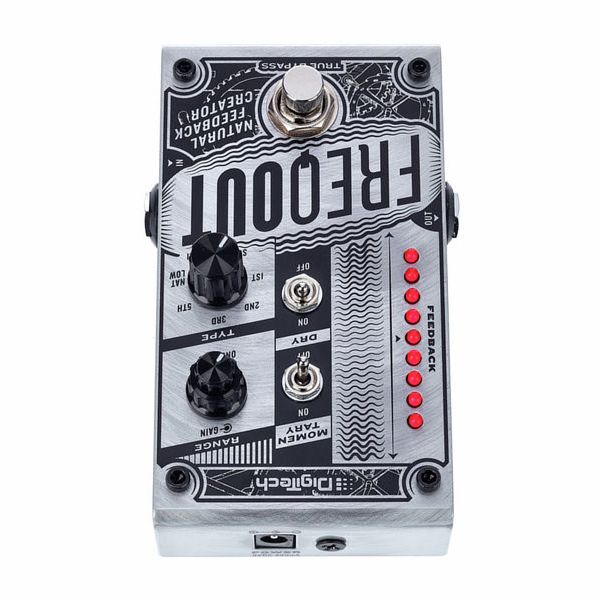
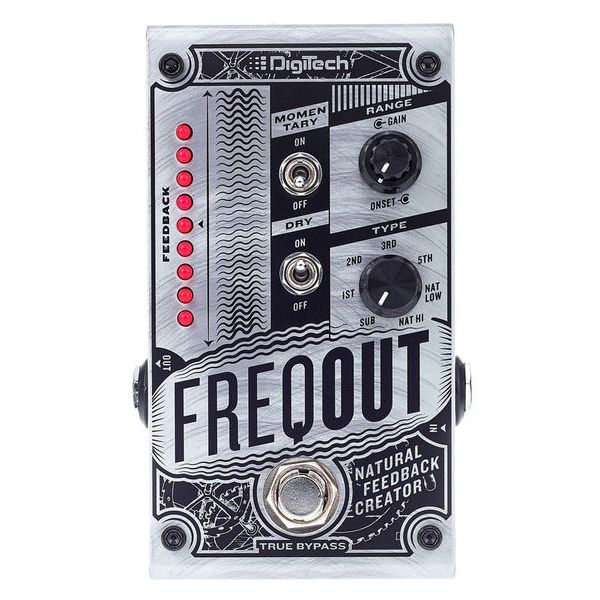
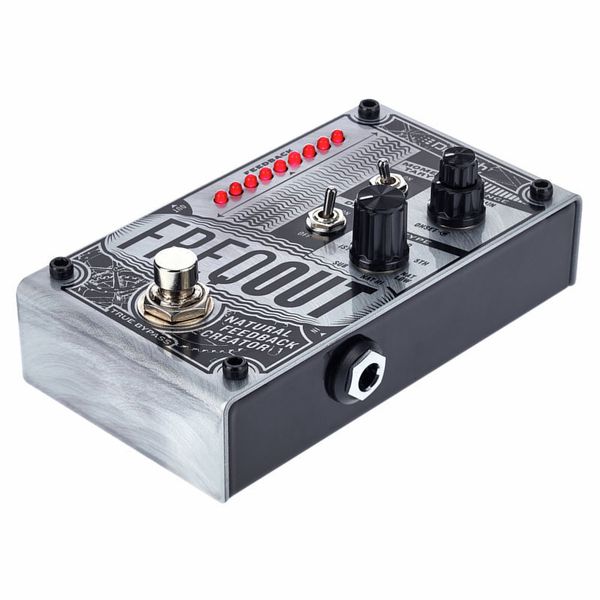
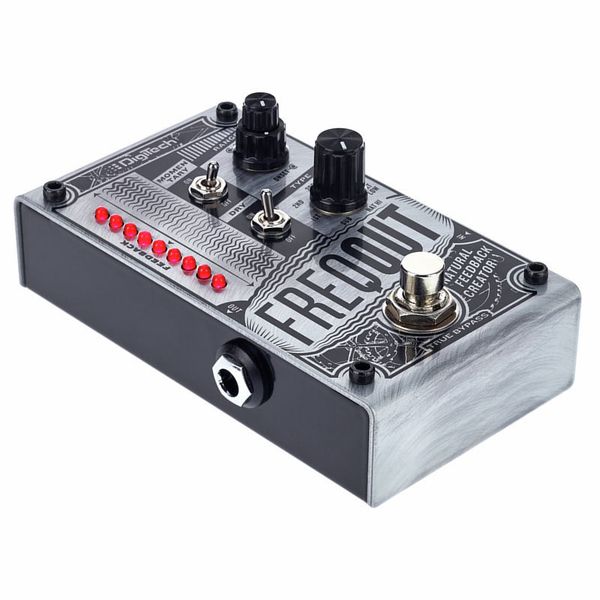

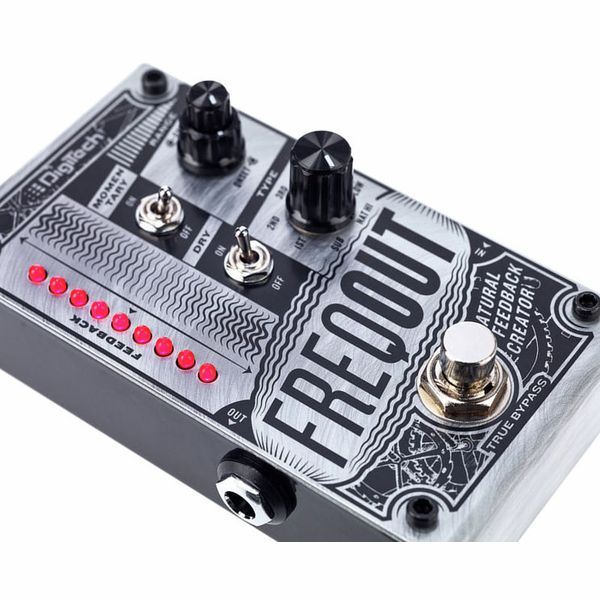
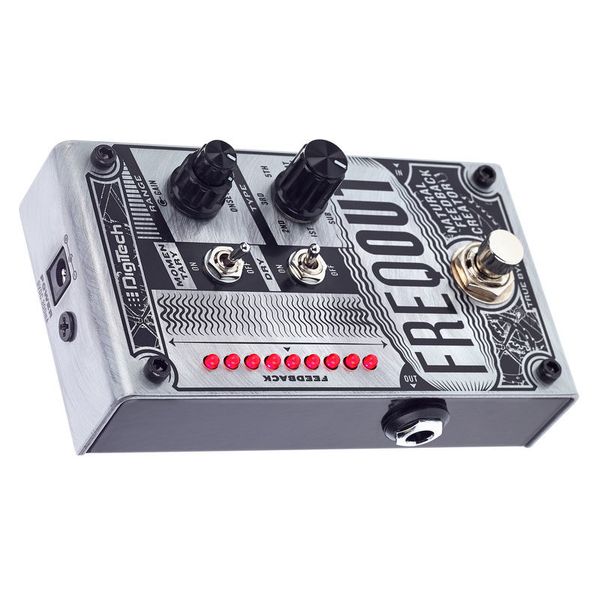
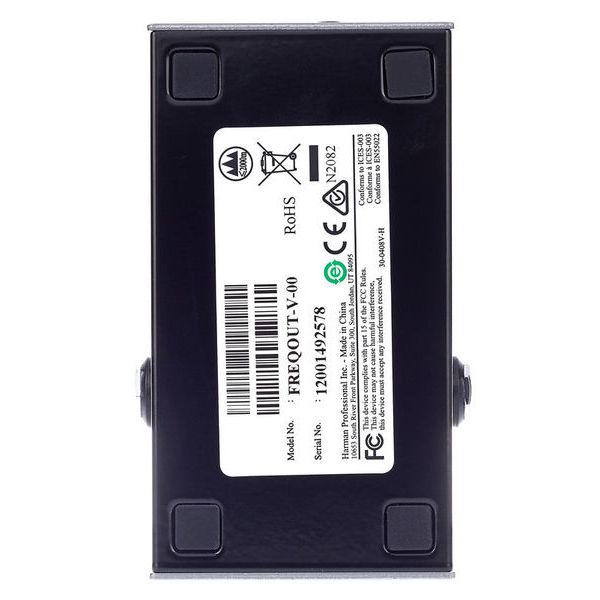











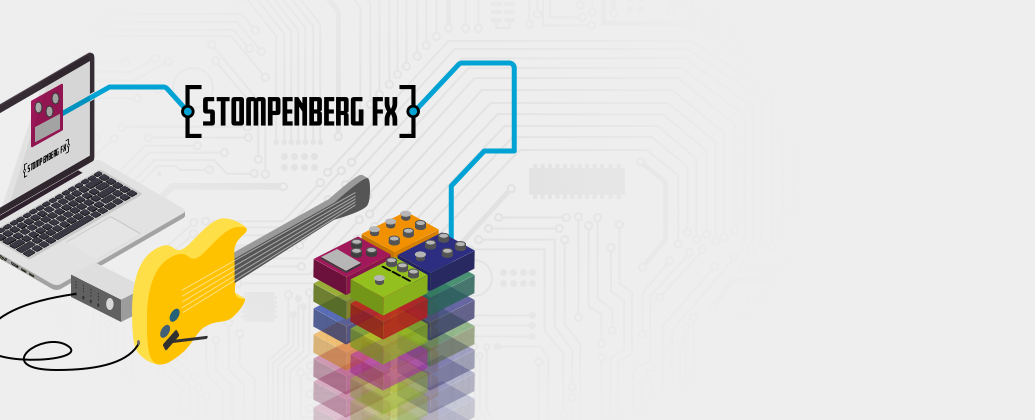


)
)
)
